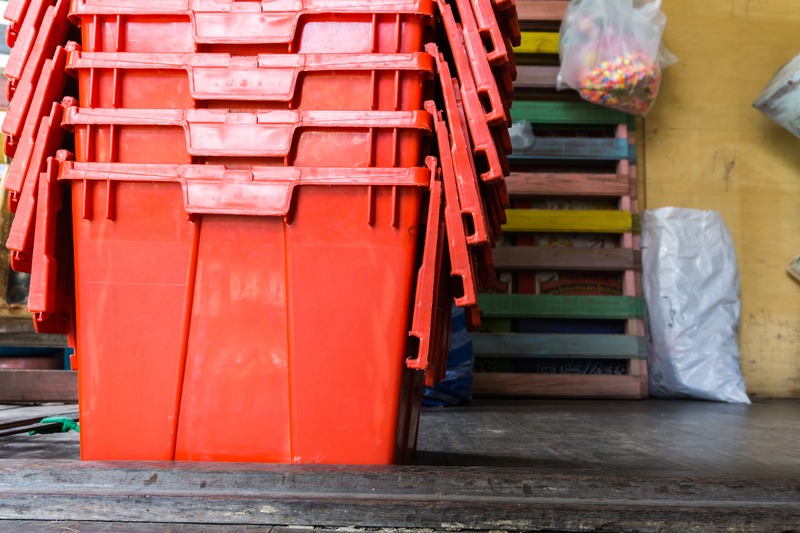Piano Moving Nightmares That Could Have Been Avoided With Professional Help
Moving a piano might seem like a straightforward task until you attempt it yourself. Many homeowners have experienced disastrous piano moves that left them with costly damages, injuries, and ruined instruments--all of which could have been prevented with expert assistance. In this comprehensive and engaging article, we'll delve into several real-life piano moving nightmares, explain the risks of moving a piano alone, explore the benefits of hiring professional piano movers, and offer essential tips for a safe, efficient, and stress-free move.

Why Is Moving a Piano So Challenging?
On the surface, moving large household items may seem similar--just some heavy lifting and careful navigation through doorways. However, pianos are uniquely challenging for several reasons:
- Weight and Size: Pianos can weigh anywhere from 300 to 1,200 pounds and are often large, unwieldy, and top-heavy.
- Fragility: Despite their size, pianos have delicate components--strings, hammers, pedals, and a soundboard that can be damaged easily.
- Irregular Shape: Unlike boxes or furniture, pianos have awkward shapes that are difficult to grip, carry, or maneuver.
- Sentimental and Monetary Value: Many pianos are family heirlooms or high-value instruments that are expensive to repair or replace.
These unique characteristics make do-it-yourself (DIY) piano moving risky for the untrained.
Common Piano Moving Mistakes That Lead to Nightmares
1. Underestimating the Complexity
A frequently heard story goes like this: "We thought we could just slide the piano down a few steps--how hard could it be?" The result? A scratched floor, a dented piano, and in some cases, an injured helper. Attempting to move a piano as part of a DIY house move, without proper dollies, straps, or moving boards, is a classic recipe for disaster.
2. Improper Lifting Techniques
Improper lifting or trying to carry a piano with only two people can lead to muscular injuries, sprained ankles, or even broken bones. The heavy, unpredictable weight can take lifters by surprise, causing sudden drops--sometimes straight onto feet or down stairs.
3. Skipping Disassembly
Grand pianos require partial disassembly before moving (ex. removing the pedals and legs). Many nightmares start with a lack of knowledge about piano construction. Trying to move the whole piece intact often leads to broken legs or cracked casings.
4. Neglecting Environmental Hazards
DIY movers often overlook hazards such as stairs, wet surfaces, or narrow hallways. A piano that slips down a staircase can cause catastrophic damage--to the house, the piano, or anyone in its path.
5. Improper Transportation
Using the wrong type of truck, skipping on padded blankets, or failing to secure the piano during transit are very common errors. The result? Numerous horror stories of pianos arriving at the new location out of tune, chipped, or with irreparable internal damage.
Real-Life Piano Moving Horror Stories
The Tip-Over Tragedy
Amanda from New York decided to move her grandmother's upright piano with a few friends. "It was heavier than we thought, and as we reached the third step, the piano tipped over onto its back. It smashed a hole through the wall and destroyed the pedals. We ended up spending $2,000 on repairs and the piano hasn't sounded the same since."
The Narrow Hallway Nightmare
James, a music teacher in Boston, tried to squeeze a baby grand piano through his Victorian-era home's narrow hallways. "The piano got stuck, and when we tried to force it through, we cracked the lid and scratched the hallway paint from top to bottom."
The Moving Truck Mishap
During a DIY house move in Chicago, a family loaded their upright piano last, without securing it. "During the first sharp turn, the piano shifted, toppling into a bookshelf--both were ruined. The strings inside the piano came loose, and now it's unplayable."
Personal Injuries
Many stories involve serious injuries--crushed fingers, strained backs, or even broken limbs. One unfortunate mover suffered a back injury so severe he was off work for a month, costing him far more than a professional moving fee.
Why Hire Professional Piano Movers?
Professional piano movers bring years of experience, specialized tools, and trained staff--helping homeowners avoid the most common piano moving nightmares. Here's what sets them apart:
- Expertise: Trained movers understand piano mechanics and know how to disassemble, move, and reassemble without causing damage.
- Specialized Equipment: They use piano dollies, moving boards, straps, padding, and ramps designed specifically for piano dimensions and weights.
- Teamwork: Movers work in teams, ensuring safe lifting and coordinated maneuvers around tricky corners and up staircases.
- Insurance: Reputable piano moving companies are insured--meaning if the worst happens, you are financially protected.
- Transportation: Professional trucks and packing ensure the piano doesn't shift, bump, or suffer temperature extremes.
Cost vs. Risk
Many DIY movers are motivated by saving money. But when you weigh the possible costs--repairs, injuries, and lost time--professional piano moving services become the most cost-effective option.
How Professional Piano Moves Work
Understanding the process can help you appreciate the value of hiring experts. Here's a step-by-step guide to how professional piano movers operate:
- Assessment: Movers assess the piano model, location, and the route it must take--identifying obstacles ahead of time.
- Preparation: The team arrives with moving blankets, straps, and boards. For grand pianos, they carefully remove the legs, pedals, and secure moving parts.
- Lifting and Moving: Piano parts are lifted with correct posture and in synchronization to prevent strain and damage.
- Safe Navigation: Every turn, step, or door frame is navigated with protective padding and a plan for each phase of movement.
- Loading and Transport: The piano is secured inside a truck using braces and padding. Climate control may be used for valuable instruments.
- Setup and Reassembly: At the destination, movers carefully reassemble the piano and position it in the new spot of your choice.
Prevention Tips: How to Avoid Your Own Piano Moving Nightmare
1. Research Piano Moving Companies
Look for local companies with specialized experience and a strong track record in piano moving. Read testimonials and ask for references.
2. Get an Accurate Quote
A reputable mover will ask questions about your piano type, location, and floor plan to give you a precise estimate--no hidden surprises.
3. Prepare Your Home
- Clear pathways and remove obstacles before moving day.
- Protect floors with rugs or padding, if necessary.
- Notify movers of stairs, tight corners, or unusual access requirements.
4. Insure Your Piano
Ask your moving company about insurance coverage and consider additional insurance if your piano is particularly valuable or rare.
5. Avoid Moving in Extreme Weather
Pianos are sensitive to humidity and temperature changes. Extreme weather can cause wood to warp or keys to stick. Professional movers know how to protect pianos in transit.
6. Schedule a Tuning After the Move
Even with the safest move, your piano might require a tune-up after relocation. Plan for a professional piano technician to service your instrument.

Piano Moving FAQs: What Every Owner Needs to Know
Is It Ever Safe to Move a Piano Yourself?
For lightweight keyboards or very short, obstacle-free moves, it may be safe with several strong helpers. However, for all upright and grand pianos, professional help is strongly recommended to avoid damaging your instrument or injuring yourself.
How Much Does Professional Piano Moving Cost?
Costs vary depending on the size and type of piano, the distance traveled, and the difficulty of the move (stairs, tight spaces, etc.). On average, you might pay:
- $150-$400 for short, local moves
- $400-$800 for grand pianos or complex moves
- Additional fees for long-distance or climate-controlled transport
Can Regular Movers Handle Pianos?
Some moving companies offer piano moving as an add-on service. Still, it's essential to confirm their expertise--not every household mover has the tools or experience for complex piano moves.
What Should I Look For in a Piano Moving Company?
- Specialization: Do they specialize in pianos?
- Equipment: Do they use custom dollies and trucks?
- Insurance: Are they fully insured against damages?
- Reputation: What do customer reviews say?
A little research now can spare you a nightmare scenario later.
Conclusion: Avoiding Piano Moving Disasters
Moving a piano without professionals can lead to catastrophic damage--to your precious instrument, your home, and, most importantly, yourself. Too many piano moving horror stories start with good intentions and end with regrets, extra costs, or injury. Skip the headaches and protect your investment by working with experienced piano movers who have the knowledge, equipment, and care necessary for a successful move.
In summary, piano moving nightmares can always be avoided with professional help. Next time you face a move, remember: hiring the experts doesn't just save you hassle--it might just save your treasured instrument, your home, and your health. Don't let your piano be the next moving horror story; let the pros handle the heavy lifting!



